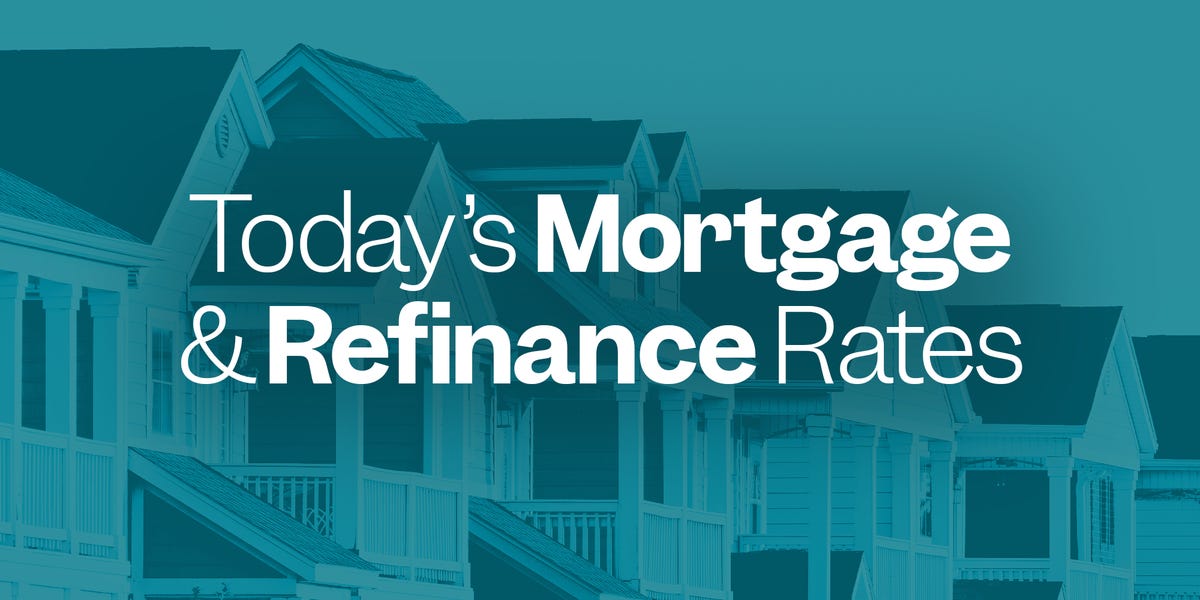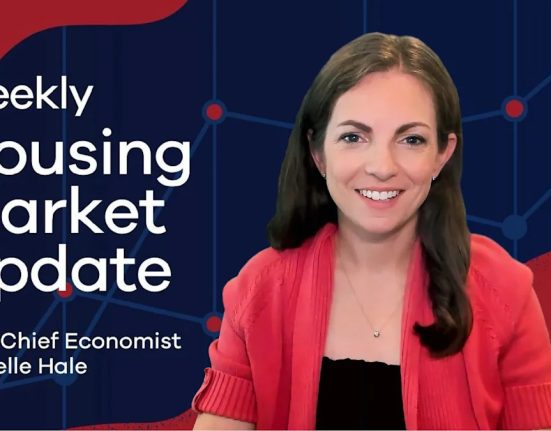The Federal Reserve is meeting on Tuesday and Wednesday, so we could see mortgage rates fluctuate a bit this week.
Fed officials have made it clear that they want to wait and see how tariffs impact the economy before they make any moves, so it’s unlikely they’ll lower the federal funds rate at this meeting. But market reactions to the commentary coming out of the meeting could push mortgage rates up or down.
Tariffs are expected to both slow economic growth and raise inflation, potentially leading to a period of stagflation. It’s hard to say how the Fed would respond to this. It could raise rates to tackle inflation, but that risks further weighing on the economy. And if it lowers rates to boost growth, that would likely spur more inflation.
For now, borrowers should expect mortgage rates to generally remain near their current levels, with some periods of volatility temporarily sending them higher or lower. If it starts to look like the Fed may cut rates soon, mortgage rates would likely start going down. But if it has to keep rates higher for longer, mortgage rates could tick up further.
Current Mortgage Rates
| Mortgage type | Average rate today |
|
|
|
|
|
|
|
|
|
|
|
|
|
|
|
|
|
|
|
|
|
Current Refinance Rates
| Mortgage type | Average rate today |
|
|
|
|
|
|
|
|
|
|
|
|
|
|
|
|
|
|
|
|
|
Mortgage Calculator
Use our simple mortgage calculator to see how today’s mortgage rates would impact your monthly payments. By plugging in different rates and term lengths, you’ll also understand how much you’ll pay over the entire length of your mortgage.
30-Year Mortgage Rates Today
Average 30-year mortgage rates are around 6.70%, according to Zillow data. This rate averaged around 6.71% in April.
The 30-year fixed-rate mortgage is the most popular home loan. With this type of mortgage, you’ll pay back what you borrowed over 30 years, and your interest rate won’t change for the life of the loan.
The lengthy 30-year term allows you to spread out your payments over a long period of time, meaning you can keep your monthly payments lower and more manageable. The trade-off is that you’ll have a higher rate than you would with shorter terms, like a 15-year mortgage.
15-Year Mortgage Rates Today
Average 15-year mortgage rates are around 6%, according to Zillow data. In April, 15-year rates averaged 6.05%.
If you want the predictability that comes with a fixed rate but are looking to spend less on interest over the life of your loan, a 15-year fixed-rate mortgage might be a good fit for you. Because these terms are shorter and have lower rates than 30-year fixed-rate mortgages, you could potentially save tens of thousands of dollars in interest. However, you’ll have a higher monthly payment than you would with a longer term.
Average Mortgage Refinance Rates Today
Refinance rates are comparable to purchase rates at the moment. Last month, 30-year refinance rates averaged 6.74%, while 15-year refinance rates were around 6.10%.
How Much Do Mortgage Rates Need to Drop to Refinance?
If you’re wondering if you should refinance now, you’ll need to crunch the numbers to see if it makes sense. Some experts advise only refinancing if you can reduce your rate by a percentage point or more, but it really comes down to whether it works for your individual circumstances.
If you can save enough each month by refinancing that you can recoup your costs in a reasonable amount of time, it might be worth it. You can calculate this by dividing your closing costs by the amount you’re saving on your monthly mortgage payment. So, if you paid $3,000 to refinance and were able to lower your monthly payment by $200, it would take you 15 months to break even on your refinance.
5-Year Mortgage Rate Trends
Here’s how 30-year and 15-year mortgage rates have trended over the last five years, according to Freddie Mac data.
What Factors Influence Mortgage Rates?
Mortgage rates are determined by a variety of different factors, including larger economic trends, Federal Reserve policy, your state’s current mortgage rates, the type of loan you’re getting, and your personal financial profile.
While many of these factors are out of your control, you can work on improving your credit score, paying off debt, and saving for a larger down payment to ensure you get the best rate possible.
How Does the Fed Rate Affect Mortgage Rates?
The Fed increased the federal funds rate dramatically in 2022 and 2023 to try to slow economic growth and get inflation under control. Inflation has since slowed significantly, but it’s still a bit above the Fed’s 2% target rate.
Mortgage rates aren’t directly affected by changes to the federal funds rate, but they often trend up or down ahead of Fed policy moves. This is because mortgage rates change based on investor demand for mortgage-backed securities, and this demand is often affected by how investors expect Fed policy to affect the broader economy.
The Fed lowered rates three times in 2024, but how much it cuts this year depends on what happens with the economy.
How Low Will Mortgage Rates Go?
Because there’s still a lot of uncertainty around how the economy will evolve in the coming months and years, it’s hard to say exactly where mortgage rates will end up.
Even if rates end up falling substantially, they’re unlikely to drop back down to the historic lows of 2020 and 2021, when 30-year fixed rates fell below 3%. Rates are expected to continue to ease throughout the next year or two, and we may ultimately see rates settle in somewhere closer to 6%.
How Do Mortgage Interest Rates Work?
Your mortgage interest rate is how much you’ll pay to borrow money for a home purchase or refinance. Each month, you’ll make a payment to pay back the funds you borrowed, and a portion of that payment will go toward paying the interest you owe.
The portion of your monthly payment that goes toward interest will go down over time through a process called amortization. As you pay off more of your mortgage, the loan balance is reduced, lowering your interest costs.
For example, say you get a mortgage of $300,000 with an interest rate of 6.5% to buy a home. Every month, you’ll pay about $1,896. On your very first mortgage payment, only $271 of that amount will go toward reducing your loan balance, while $1,625 will be paid in interest. But if you fast forward 20 years, $992 of that same monthly payment will be applied to the loan balance, and about $905 will go toward interest.
You can ask your lender for an amortization schedule to see the breakdown of your payments throughout the life of the loan, or you can use an online amortization calculator.
How Often Do Mortgage Rates Change?
Mortgage rates change throughout the day, and they can fluctuate day-to-day or week-to-week based on what’s going on in the economy. If economic conditions are relatively stable, mortgage rates might not move much. But uncertainty or expectations that conditions will change soon can send rates up or down.
How to Shop for Mortgage Rates
Mortgage lenders don’t all offer the exact same rates, so you could save a lot of money by shopping around for the best rate.
Experts generally recommend getting quotes from a few different lenders — consider applying with at least three lenders to get an idea of the range of rates available to you. If you’re still early in the process, you can apply for preapproval, which allows you to get an estimate of your rate while you’re still searching for homes. If you’re under contract on a home, you can apply for regular approval, which will give you a more accurate picture of what you’ll pay with a given lender.
Be sure to look at the overall offer. If you have to pay a lot in fees to get a lower rate, it might not be worth it. Also consider other benefits and features that are important to you, like if a lender has great customer service or down payment assistance.







